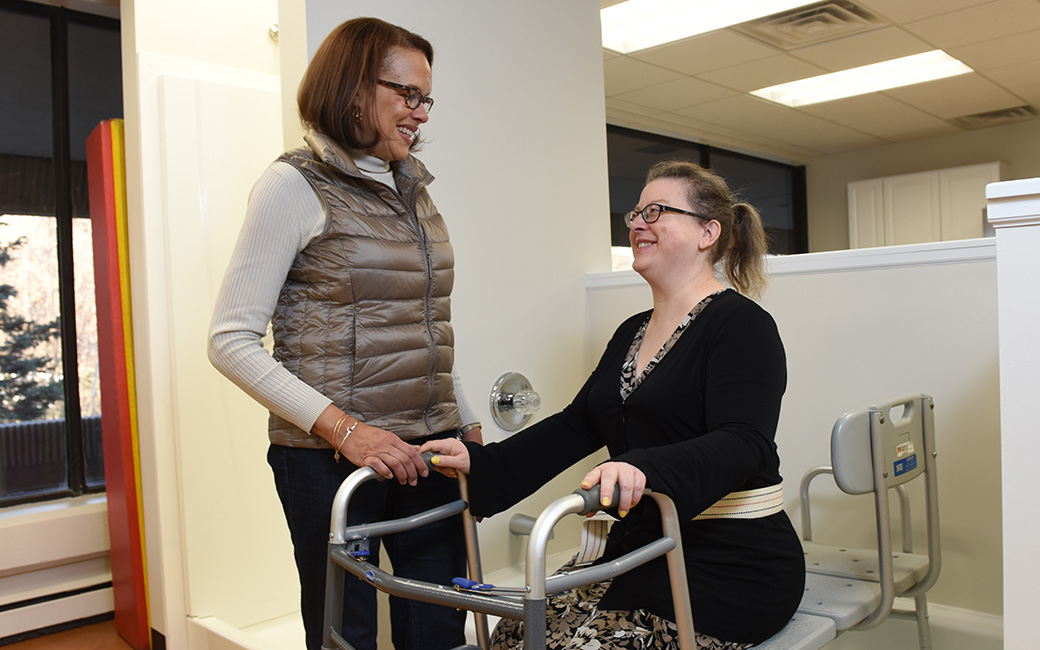Sonia Lawson
Associate Professor, Occupational Therapy and Occupational Science

It’s been more than two decades since Sonia Lawson began teaching full time at Towson, and she has witnessed tremendous changes in the fields of occupational therapy and occupational science.
“There is a much greater impetus for therapists to generate and use evidence more
effectively since third-party payers require greater evidence of improvement to qualify
clients for medical reimbursement payments,” explains Lawson. Additionally, with changes
to the U.S. health care system as a result of the Affordable Care Act, her research
on caregivers as health service extenders has contributed to a greater understanding
of occupational therapy’s role in this area. Lawson’s recent article in Physical and
Occupational Therapy in Geriatrics highlighted the results of a nationwide survey
of training provided to caregivers of stroke survivors by rehabilitation therapists.
“ Through participation in support, assessment, and intervention planning, our students are more poised and confident when it comes to completing their field experiences. ”
She has also seen technology take its place among therapy tools. “We are now using
iPads and different apps as routine rehabilitation tools,” says Lawson, who has helped
develop ARMStroke with faculty from computer and information sciences. The collaborative
rehabilitation application can be accessed through a smart phone and monitored remotely
by therapists, caregivers and patients. “Currently, the app is being used with stroke
survivors having difficulty with arm movement, from flexing shoulders and elbows to
rotating their forearms,” explains Lawson.
Lawson has played a key role in co-leading Towson’s Stroke Survivors Group. This group
spawned the Wellness in Stroke and Head Injury (WISH) program, which meets weekly
for daily living and social interaction activities and an exercise program. “We have
given stroke survivors a place to go to get emotional support, exercise and practice
in daily activities,” says Lawson. Students participate in both of these groups.
“Students need to learn from many different perspectives. These experiences help them start thinking like therapists,” says Lawson. “Through participation in support, assessment, and intervention planning, our students are more poised and confident when it comes to completing their field experiences.”